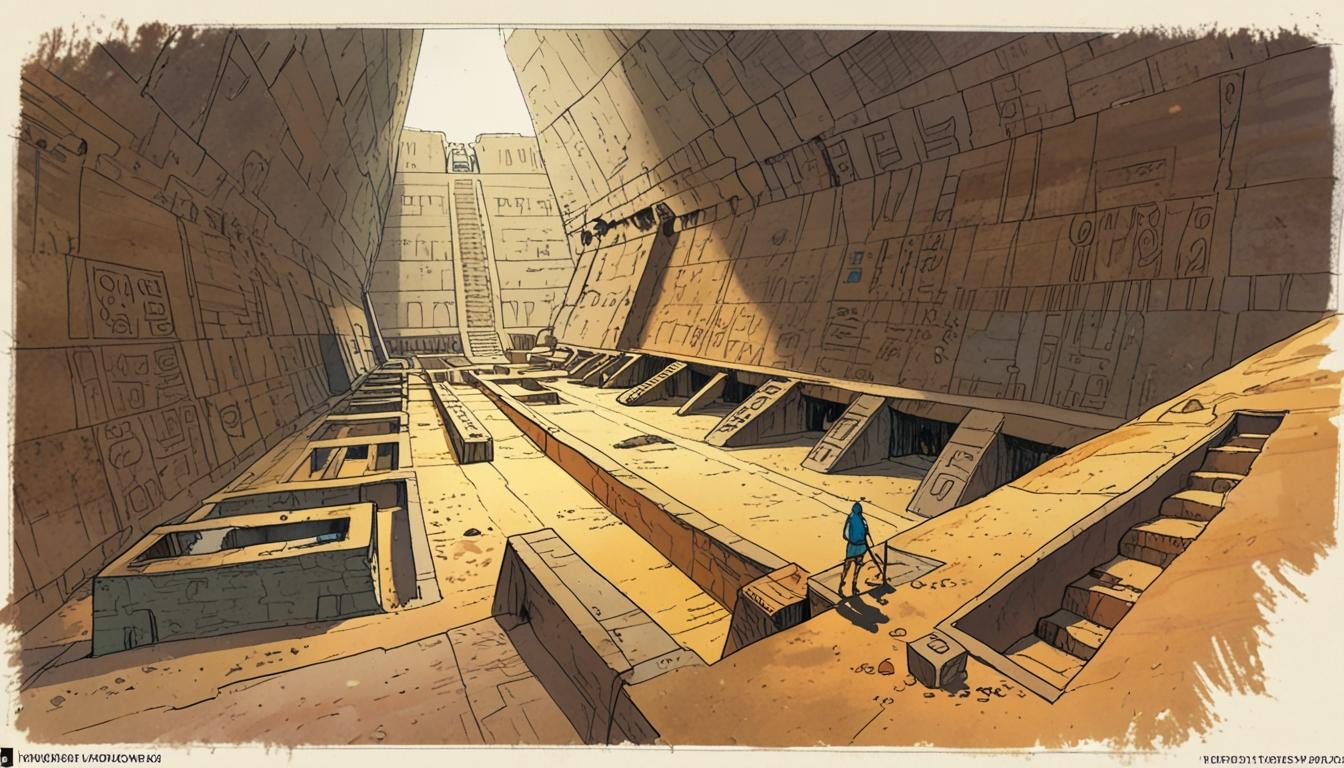A team of Italian researchers has made startling claims about vast subterranean structures beneath the Pyramids of Giza, potentially reshaping understanding of one of the world's most famous archaeological sites. Using ground-penetrating radar technology, the scientists mapped a network of tunnels, shafts, and chambers extending thousands of feet beneath the Khafre Pyramid, one of the three iconic pyramids located on the Giza Plateau in Egypt. The discovery was announced in recent weeks, though the research has yet to undergo peer review or formal publication in scientific journals.
The Italian team, including Egyptologist Armando Mei from the University of Pisa, Filippo Biondi of the University of Strathclyde in Scotland, and Corrado Malanga from Italy's University of Pisa, reported uncovering enormous underground shafts with staircases and chambers that reportedly stretch over 4,000 feet below the surface. Photographs from the scans reportedly show vast subterranean cavities with what has been described as a "tuning fork" shape along the northern side of the pyramid's complex.
The implications of the discovery have reignited long-standing debates and fringe theories about the origins and construction of the pyramids. Some alternative historians, such as Graham Hancock who has popularised such ideas on platforms like Joe Rogan’s podcast, argue that an advanced prehistoric civilisation, lost to a global catastrophe potentially caused by a comet impact around 12,800 years ago, passed down sophisticated knowledge of astronomy, engineering, and sacred architecture to later cultures including the ancient Egyptians.
Supporting this controversial hypothesis, Dr James Kennett, a geologist at the University of California Santa Barbara and advocate of the comet-impact theory, told DailyMail.com that evidence exists of a major population decline among the ancient Clovis culture in North America coinciding with this period around 12,800 years ago. He also noted compelling comet impact evidence from Abu Hureyra in Syria, roughly 1,000 miles from Giza — suggesting the possibility of catastrophic flooding events affecting parts of ancient Egypt through inundation from the Mediterranean Sea and Nile River.
This theory intriguingly correlates with ancient Egyptian mythological narratives. Andrew Collins, a researcher of prehistoric civilisations, highlighted hieroglyphic inscriptions on the walls of the Temple of Edfu, located approximately 780 miles south of Giza. Known as the Edfu Building Texts, these inscriptions recount a great flood that destroyed a mysterious ancient civilisation referred to as the "Eldest Ones." Collins interprets depictions of an "enemy serpent," linked metaphorically to a comet, as responsible for plunging the world into darkness and submerging land under floodwaters.
Collins told DailyMail.com, "[The text describes] them storing sacred objects in an underground structure called the Underworld of the Soul. This I am sure relates to Giza's cave system and any structures it may contain." However, he acknowledged that mainstream Egyptologists generally reject his interpretations, regarding the Edfu texts as symbolic or mythological and disputing any direct mention of Giza itself.
Moreover, Collins pointed to archaeological sites such as Göbekli Tepe and Karahan Tepe in Turkey, dating from around 9600 BCE, as evidence of sophisticated post-Ice Age civilisations, challenging conventional timelines of human history. He described ancient peoples such as the Gravettian culture in Russia, who lived approximately 30,000 years ago, as possessing advanced capabilities in tailored clothing, lunar tracking, and rectilinear building constructions.
Despite the intrigue surrounding these new findings and interpretations, many scholars urge caution. The Italian research team's groundbreaking claims await validation through rigorous academic scrutiny and peer-reviewed publication. Whether their subterranean discoveries beneath the Khafre Pyramid will withstand critical examination remains uncertain. Nonetheless, the revelations have undeniably added fresh fuel to an enduring archaeological enigma and revived discussions about the possible existence of lost civilisations and catastrophes linked to comet impacts that could have shaped early human history.
Source: Noah Wire Services
